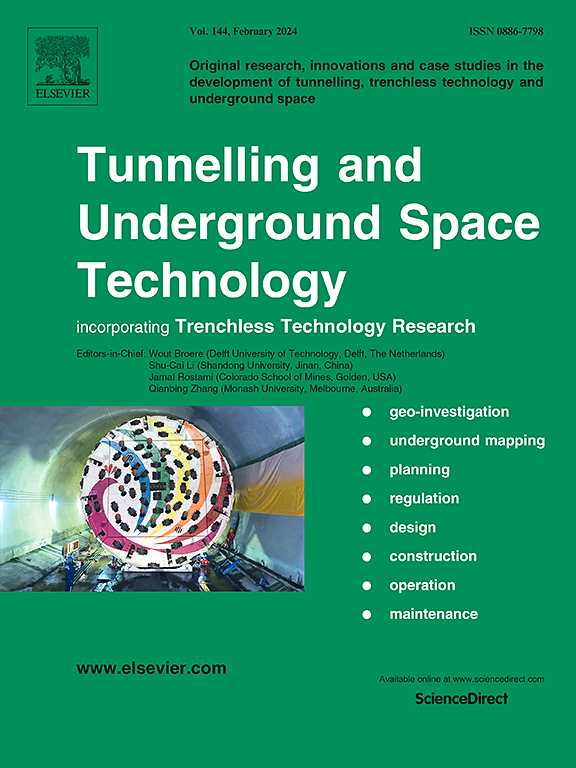Axial chain rockbursts in deep tunnels excavated via drilling and blasting
IF 6.7
1区 工程技术
Q1 CONSTRUCTION & BUILDING TECHNOLOGY
引用次数: 0
Abstract
Chain rockbursts have a long duration and significant hazards, severely affecting construction progress, yet their occurrence patterns and formation mechanisms remain unclear. Monitoring was conducted on a deeply buried tunnel in southwest China for axial chain rockbursts (ACRs) occurrences. The recorded ACRs (23 weak, 3 moderate, and 3 intense) were analyzed to reveal their patterns of occurrence, geological characteristics, and mechanisms of formation. ACRs were studied through geological surveys, analysis of on-site failure characteristics, and a series of laboratory tests. The findings indicate that ACRs are most likely to occur near river valleys, faults, and geological contact zones, where the overburden is significant, and the direction of major stress is perpendicular to the tunnel axis. In ACRs-prone regions, the content of brittle minerals in the surrounding rock tends to be relatively high. At the site studied, the proportion of plagioclase in the diorite ranges from 55 % to 65 %. ACRs are likely to be triggered when the dip of structural planes forms a small angle with the principal stress, and when their strike is parallel (or nearly parallel) to the tunnel axis, or when a group of structural planes intersects the tunnel axis at a small angle and is distributed along it. During tunnel excavation in areas prone to ACRs, appropriate measures should be sufficiently robust and ductile, aimed at enhancing the strength and ductility of the surrounding rock, with support structures closely following the excavation face. This investigation contributes to our understanding of ACRs and may help in designing methods for predicting and preventing their occurrence.
求助全文
约1分钟内获得全文
求助全文
来源期刊

Tunnelling and Underground Space Technology
工程技术-工程:土木
CiteScore
11.90
自引率
18.80%
发文量
454
审稿时长
10.8 months
期刊介绍:
Tunnelling and Underground Space Technology is an international journal which publishes authoritative articles encompassing the development of innovative uses of underground space and the results of high quality research into improved, more cost-effective techniques for the planning, geo-investigation, design, construction, operation and maintenance of underground and earth-sheltered structures. The journal provides an effective vehicle for the improved worldwide exchange of information on developments in underground technology - and the experience gained from its use - and is strongly committed to publishing papers on the interdisciplinary aspects of creating, planning, and regulating underground space.
 求助内容:
求助内容: 应助结果提醒方式:
应助结果提醒方式:


